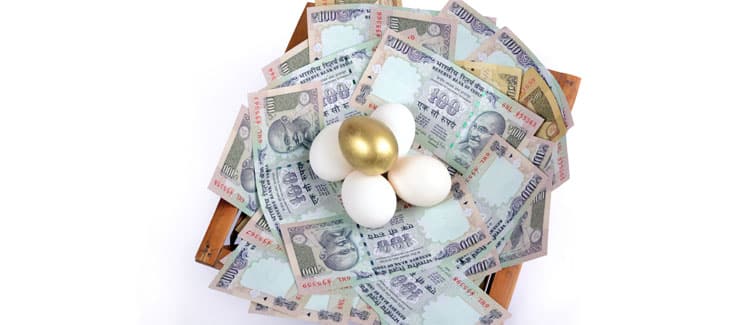Indirect Tax
An indirect tax is a type of tax where the burden of paying the tax is passed on to another entity, that is the end consumer. Unlike direct taxes, which are levied directly on individuals or businesses, indirect taxes are imposed on goods and services. The responsibility for collecting and remitting the tax to the government falls on manufacturers, distributors, or retailers.
What is Indirect Tax?
Indirect tax is a type of tax that is not directly levied on the income of individuals or businesses but is imposed on the production, sale, purchase, or consumption of goods and services. Unlike direct taxes, such as income tax, which are directly collected from individuals or businesses, indirect taxes are collected by an intermediary, such as a retailer or service provider, who then passes on the tax burden to the end consumer.
Examples of Indirect Taxes:
Imagine you decide to buy a pizza. Here's a breakdown of the cost:
Base Price: ₹100
GST (5%): ₹5 (added by the restaurant owner)
So, the total amount you pay for the pizza is ₹105. The GST, which is 5% of the base price, is an additional charge that goes to the government, and it brings the overall cost to ₹105.
What are the Different Types of Indirect Taxes in India?
Below are the different types of indirect taxes in India:
-
Goods and Services Tax (GST)
-
Sales Tax
-
Excise Tax
-
Customs duty
-
Value Added Tax (VAT)
-
Stamp Duty
-
Entertainment Tax
-
Service Tax
-
Goods and Services Tax (GST):
GST is an indirect tax on goods and services levied at each stage of production and distribution. It replaced multiple taxes, simplifying the system and ensuring that the end consumer bears the final tax burden.
-
Sales Tax:
Sales tax is an indirect tax imposed on the sale of goods and, in some cases, services. Collected by the seller at the point of sale, it contributes to government revenue and varies in rates and regulations across jurisdictions.
-
Excise Duty:
This tax is levied on goods manufactured or produced in India. The rate of excise duty varies depending on the type of goods. Excise duty is a major source of revenue for the government and helps to control the prices of certain goods.
-
Customs Duty:
This tax is levied on goods imported into India. The rate of customs duty varies depending on the type of goods and its country of origin. Customs duty is a major source of revenue for the government and helps to protect domestic industries.
-
Value Added Tax (VAT):
Prior to GST, VAT was a major indirect tax levied on the sale of goods in many Indian states. However, with the introduction of GST, VAT has been abolished in most states. Currently, VAT is only applicable to a limited number of goods, such as petroleum products and alcohol.
-
Stamp Duty:
Stamp duty is a one-time tax on the transfer of legal documents like property deeds and contracts. It ensures the legality of transactions and varies in amount based on transaction or property value.
-
Entertainment Tax:
This tax is levied on tickets to movies, plays, and other forms of entertainment. The rate of entertainment tax varies from state to state.
-
Service Tax:
Before the introduction of GST, service tax was levied on various services provided in India. However, with the implementation of GST, most services have been added under the GST regime. Currently, service tax is only applicable to a limited number of services, such as stockbroking and online gambling.
What are the Features of Indirect Tax?
Indirect taxes have several features that contribute to the efficiency and fairness of the taxation system:
-
Efficient Taxation Structure:
-
Indirect taxes facilitate a streamlined tax system wherein customers pay taxes on the products or services they purchase.
-
The responsibility for collecting this tax lies with the seller or manufacturer, who subsequently forwards the collected amount to the government.
-
-
Fair and Progressive Taxation:
-
The proper implementation of uniform indirect taxes across the country contributes to their progressive nature.
-
This leads to numerous benefits for buyers, sellers, and the government, reducing confusion and removing overlapping issues.
-
The progressive nature of indirect taxes has also played a role in minimising tax fraud.
-
-
Transparency and Accountability:
-
Indirect taxes, being directly implemented on the sale and purchase of goods and services, have contributed significantly to the reduction of tax evasion.
-
This reduction in tax evasion enhances the transparency of tax administration and collection processes, fostering a more accountable financial system.
-
What are the Advantages of Indirect Tax?
-
Indirect taxes are levied on a wide range of goods and services, creating a broad revenue base for the government.
-
Collection through sellers simplifies the administration of indirect taxes, making them easier to implement and manage.
-
Direct implementation of transactions minimises opportunities for tax evasion, ensuring a more transparent taxation system.
-
Indirect taxes can be adjusted to influence consumer behaviour, providing a tool for economic control.
-
Uniform application of indirect taxes provides simplicity, reducing confusion and complexities in the tax structure.
FAQ's
-
What is the difference between direct and indirect tax?
Difference between Direct and Indirect Tax:-
Direct Tax: Paid directly by individuals or businesses based on income, profits, or assets (e.g., income tax, capital gains tax).
-
Indirect Tax: Levied on goods and services and ultimately borne by consumers as part of the purchase price (e.g., GST, customs duty).
-
-
Is TDS Indirect Tax?
Tax Deducted at Source or TDS is a type of indirect tax. It involves the direct collection of revenue at the source of the recipient's income. This system operates on the principles of 'pay as you earn' and 'collect when it is earned'.
˜The insurers/plans mentioned are arranged in order of highest to lowest first year premium (sum of individual single premium and individual non-single premium) offered by Policybazaar’s insurer partners offering life insurance investment plans on our platform, as per ‘first year premium of life insurers as at 31.03.2025 report’ published by IRDAI. Policybazaar does not endorse, rate or recommend any particular insurer or insurance product offered by any insurer. For complete list of insurers in India refer to the IRDAI website www.irdai.gov.in
*All savings are provided by the insurer as per the IRDAI approved insurance plan.
^The tax benefits under Section 80C allow a deduction of up to ₹1.5 lakhs from the taxable income per year and 10(10D) tax benefits are for investments made up to ₹2.5 Lakhs/ year for policies bought after 1 Feb 2021. Tax benefits and savings are subject to changes in tax laws.
¶Long-term capital gains (LTCG) tax (12.5%) is exempted on annual premiums up to 2.5 lacs.
++Source - Google Review Rating available on:- http://bit.ly/3J20bXZ


- SIP Calculator
- Income Tax Calculator
- Compound Interest Calculator
- NPS Calculator
- Show More Calculator
Income Tax articles
Explore the popular searches and stay informed
- LIC
- Investment Plan
- Annuity Plan
- Child Plan
- Pension Plan
- ULIP Plan
- Child Investment Plan
- SIP
- LIC Calculator
- SIP Calculator
- SBI SIP
- ULIP Calculator
- Sukanya Samriddhi Yojana
- Best SIP Plans
- Retirement Planning
- SBI SIP Calculator
- HDFC SIP Calculator
- Sukanya Samriddhi Yojana Interest Rate
- NPS Interest Rate
- Deferred Annuity Plans
- SBI Annuity Deposit Scheme Calculator
- Immediate Annuity Plans
- Post Office Child Plan
- Prime Minister Schemes For Boy Child
- Government Schemes for Girl Child
- 50k Pension Per Month
- Atal Pension Yojana Calculator
- Best Pension Plan in India
- CIBIL Score
- 1 Crore Term Insurance
- Best Term Insurance Plan
- Term Insurance for Women
- Term Insurance for NRI
- Term Insurance
- Term Insurance Calculator
- Life Insurance
- Term Insurance with Return of Premium
- Whole Life Insurance
- Term Insurance vs Life Insurance
- What is Term Insurance
- Life Insurance Calculator
- 5 Crore Term Insurance
- 2 Crore Term Insurance
- 50 Lakh Term Insurance
- Term Insurance for Housewife
- Benefits of Term Insurance
- Term Insurance Terminology
- Medical Tests for Term Insurance
- Term Insurance for Self Employed
- Claim Settlement Ratio
- 10 Crore Term Insurance
- Term Insurance for Smokers
- 1.5 Crore Term Insurance
- Zero Cost Term Insurance
- FIRE Calculator















